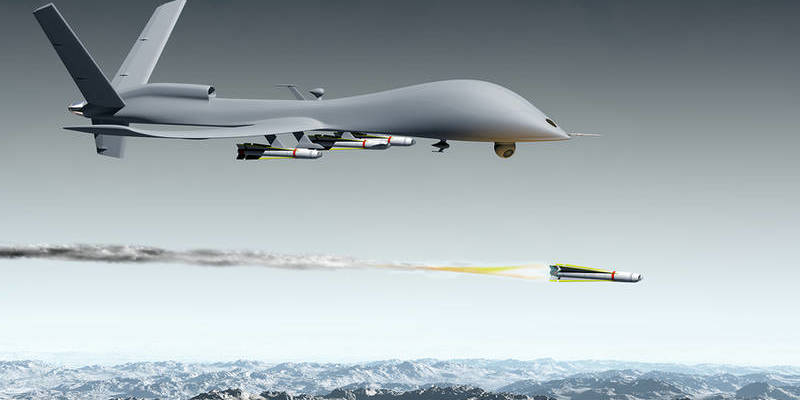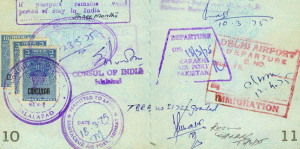“They say Lewis Carol is fiction,” Senator Rand Paul begins his filibuster, opposing drone strikes on American soil. “Alice never fell down a rabbit hole, and the White Queen’s caustic judgements are not really a threat to your security. Has America the beautiful become Alice’s wonderland?” Paul proceeds with a dialogue excerpt from classic literature, ending with embellishment:
“No no!” said the Queen, “Sentence first, verdict afterwards!”
“Stuff and nonsense!” said Alice loudly. “The idea of having the sentence first!”
“Hold your tongue!” said the Queen, turning purple.
“I won’t!” said Alice.
“Release the drones!” the Queen shouted at the top of her voice.
Senator Rand Paul makes an analogous connection between fiction and reality. Though Senator’s argument ultimately opposes drone strikes on American soil, perhaps it should be taken a step further, serving also as an argument for opposing strikes on foreigners. For just as the Queen insisted on sentencing a suspect before the jury had a chance to consider, so President Barack Obama implements the use of drone strikes to sentence foreign suspects to death without a verdict.
Drones have been used to strike citizens in foreign countries since 2004, when it was first authorized by George W. Bush. Since then, there have been hundreds of drone strikes in Pakistan, Libya, Yemen, Somalia, Iraq, and Afghanistan. The purpose of these attacks is to eliminate foreigners suspected of terrorism. Why are they struck down by drones, instead of given a free trial? Obama’s reasoning for denying them a fair and speedy trial is essentially because we don’t have enough time or space. Does this reasoning justify the consequences?
Because terrorism is such a sensitive issue, as many Americans have been hurt by events such as 9/11, some may be inclined to say that denying terrorism suspects a trial is inconsequential. Perhaps, so long as they’re being caught, it doesn’t matter how their sentence is being carried out. There are many problems with this philosophy, however, one being that a president’s job description does not include being a judge, jury, and executioner. There is no higher power than judging whether a man lives or dies, and it a power too great for the judgement of one man alone. Despite this, President Obama has escalated the use of drones exponentially, and even launched a war on Libya illegally in 2011, with no regard for congressional approval. Interestingly, even Obama himself agrees with its unconstitutionality, as he wrote in 2007:
“The president does not have power under the Constitution to unilaterally authorize a military attack in a situation that does not involve stopping an actual or imminent threat to the nation … History has shown us time and again, however, that military action is most successful when it is authorized and supported by the Legislative branch.”
Additionally, U.S. drones are not merely targeting Al Qaeda and their allies–they are targeting militants crossing the Afghan border. This contradicts the Obama Administration’s statement that the drones were only being used to target members of al-Qaeda or those who pose an ‘imminent threat’. Additionally, targeting Taliban foot soldiers was not legalized under the Authorization to Use Military Force (AUMF) that was passed by Congress in 2001.
Furthermore, even if one believes illegal strikes, wars, and the President’s abuse of power are justified, there are still further problems with utilizing drones to target suspects and militants. Drone strikes often do not hit their initial target–and in fact, are hardly reliable at all. Heather Linebaugh, who worked on the U.S. drone program, states:
“What the public needs to understand is that the video provided by a drone is not usually clear enough to detect someone carrying a weapon, even on a crystal-clear day with limited cloud and perfect light. This makes it incredibly difficult for the best analysts to identify if someone has weapons for sure. One example comes to mind: “The feed is so pixelated, what if it’s a shovel, and not a weapon?” I felt this confusion constantly, as did my fellow UAV analysts. We always wonder if we killed the right people, if we endangered the wrong people, if we destroyed an innocent civilian’s life all because of a bad image or angle”
It is, in part, the drones’ inability to properly detect threats, and the Obama administration’s disregard for that fact, that has lead to the worst of consequences: the deaths of many innocent civilians. Unfortunately, because U.S. officials have delivered only faulty information over drone strikes, and few or no statistics, it is difficult to judge the exact number of casualties. Still, an estimated 3,213 fatalities have occurred in Pakistan since 2004, with only 2% being high profile targets–the rest civilians, children, and alleged combatants. In Yemen, Human Rights Watch investigated 6 of the drone strikes that had occurred since 2009 and concluded that at least 57 of the 82 victims were civilians. It is certain that of the total deaths, at least 140 innocent children from Pakistan and Yemen have died from being wrongly targeted by, or caught in the crossfire of, drones. In fact, in October 2006, 69 children were struck and killed during school. All of this is contradictory to the White House’s promise that drone strikes will only be carried out when civilians will not be caught in the crossfire.
A recent example of a caustic drone mistake occurred on Thursday, December 12th, 2013. A U.S. drone struck down 15 citizens of Yemen on their way to a wedding party–the 8th wedding party to be fatally mistaken for an al-Qaeda convoy. 10 of the civilians were killed immediately, and the other injured 5 died soon after being admitted to the hospital.
Instead of owning up to this mistake, U.S. officials refused to comment on the matter. That is, until the Yemeni government became outraged, passing a resolution to ban U.S. drone strikes. Then, anonymous U.S. officials claimed the drone had targeted the “ringleader behind the summer plot that shuttered 19 diplomatic posts across Africa and the Mideast.” However, a local Yemeni news website published the names of the deceased, proving they were all civilians. Journalist Kevin Gosztola writes:
The name of the alleged target of the strike on December 12 is, according to these US officials, Shawqi Ali Ahmad al-Badani. But no member of the al-Badani family was being married that day. And the people killed were either from the -al-Taysi family or the al-Amiri family.
Even if an al-Qaeda ally was aboard one of the vehicles, that does not justify an execution without a verdict, and certainly not the deaths of the other 14 civilians. Additionally, the fact that the Obama administration refused to take responsibility, lying outright about the mistake, is demonstrative of disrespect towards human life. Lawful citizens of Libya, Yemen and Pakistan should never have to suffer for the actions of terrorists.
Alice was right–sentence first, verdict afterwards is ‘stuff and nonsense’. The President never should have usurped the power to execute suspects who have not been proven guilty–the cost is too great a price to pay.
Chana Elizabeth Bainter
Image Credits: paul fleet/BigStock.com







